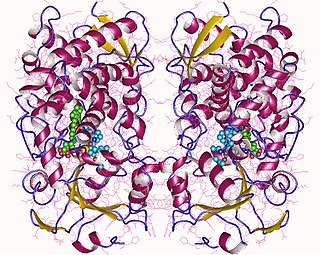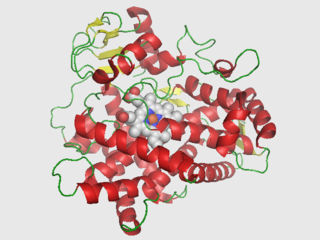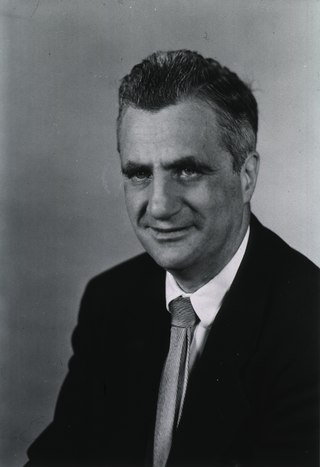
Pharmacology is a branch of medicine,biology,and pharmaceutical sciences concerned with drug or medication action,where a drug may be defined as any artificial,natural,or endogenous molecule which exerts a biochemical or physiological effect on the cell,tissue,organ,or organism. It is the science of drugs including their origin,composition,pharmacokinetics,therapeutic use,and toxicology. More specifically,it is the study of the interactions that occur between a living organism and chemicals that affect normal or abnormal biochemical function. If substances have medicinal properties,they are considered pharmaceuticals.

Nicotine is a naturally produced alkaloid in the nightshade family of plants and is widely used recreationally as a stimulant and anxiolytic. As a pharmaceutical drug,it is used for smoking cessation to relieve withdrawal symptoms. Nicotine acts as a receptor agonist at most nicotinic acetylcholine receptors (nAChRs),except at two nicotinic receptor subunits where it acts as a receptor antagonist.
Detoxification or detoxication is the physiological or medicinal removal of toxic substances from a living organism,including the human body,which is mainly carried out by the liver. Additionally,it can refer to the period of drug withdrawal during which an organism returns to homeostasis after long-term use of an addictive substance. In medicine,detoxification can be achieved by decontamination of poison ingestion and the use of antidotes as well as techniques such as dialysis and chelation therapy.

Pharmacogenomics is the study of the role of the genome in drug response. Its name reflects its combining of pharmacology and genomics. Pharmacogenomics analyzes how the genetic makeup of an individual affects their response to drugs. It deals with the influence of acquired and inherited genetic variation on drug response in patients by correlating DNA mutations with pharmacokinetic,pharmacodynamic,and/or immunogenic endpoints.

Cytochrome P450 3A4 is an important enzyme in the body,mainly found in the liver and in the intestine. It oxidizes small foreign organic molecules (xenobiotics),such as toxins or drugs,so that they can be removed from the body. It is highly homologous to CYP3A5,another important CYP3A enzyme.

Cytochrome P450 2D6 (CYP2D6) is an enzyme that in humans is encoded by the CYP2D6 gene. CYP2D6 is primarily expressed in the liver. It is also highly expressed in areas of the central nervous system,including the substantia nigra.
Drug metabolism is the metabolic breakdown of drugs by living organisms,usually through specialized enzymatic systems. More generally,xenobiotic metabolism is the set of metabolic pathways that modify the chemical structure of xenobiotics,which are compounds foreign to an organism's normal biochemistry,such as any drug or poison. These pathways are a form of biotransformation present in all major groups of organisms and are considered to be of ancient origin. These reactions often act to detoxify poisonous compounds. The study of drug metabolism is called pharmacokinetics.

Cytochrome P450 family 2 subfamily C member 9 is an enzyme protein. The enzyme is involved in metabolism,by oxidation,of both xenobiotics,including drugs,and endogenous compounds,including fatty acids. In humans,the protein is encoded by the CYP2C9 gene. The gene is highly polymorphic,which affects the efficiency of the metabolism by the enzyme.

Cytochrome P450 2C19 is an enzyme protein. It is a member of the CYP2C subfamily of the cytochrome P450 mixed-function oxidase system. This subfamily includes enzymes that catalyze metabolism of xenobiotics,including some proton pump inhibitors and antiepileptic drugs. In humans,it is the CYP2C19 gene that encodes the CYP2C19 protein. CYP2C19 is a liver enzyme that acts on at least 10% of drugs in current clinical use,most notably the antiplatelet treatment clopidogrel (Plavix),drugs that treat pain associated with ulcers,such as omeprazole,antiseizure drugs such as mephenytoin,the antimalarial proguanil,and the anxiolytic diazepam.

N-acetyltransferase (NAT) is an enzyme that catalyzes the transfer of acetyl groups from acetyl-CoA to arylamines,arylhydroxylamines and arylhydrazines. They have wide specificity for aromatic amines,particularly serotonin,and can also catalyze acetyl transfer between arylamines without CoA. N-acetyltransferases are cytosolic enzymes found in the liver and many tissues of most mammalian species,except the dog and fox,which cannot acetylate xenobiotics.

Xenobiotica is a peer-reviewed medical journal that publishes comprehensive research papers on all areas of xenobiotics. It is published by Informa plc and covers six main areas:

An electronic cigarette is an electronic device that simulates tobacco smoking. It consists of an atomizer,a power source such as a battery,and a container such as a cartridge or tank. Instead of smoke,the user inhales vapor. As such,using an e-cigarette is often called "vaping". The atomizer is a heating element that vaporizes a liquid solution called e-liquid,which quickly cools into an aerosol of tiny droplets,vapor and air. E-cigarettes are activated by taking a puff or pressing a button. Some look like traditional cigarettes,and most kinds are reusable. The vapor mainly comprises propylene glycol and/or glycerin,usually with nicotine and flavoring. Its exact composition varies,and depends on several things including user behavior.

Bernard Beryl Brodie was a founding scientist in the area of biochemical and neurochemical pharmacology whose work in the 1940s and 1950s had great impact. He was a major figure in the fields of drug metabolism and drug therapy,studying how the absorption and interactions of drugs in the body. Brodie helped to found and lead the Laboratory of Chemical Pharmacology at the National Heart Institute in Bethesda,Maryland,one of the National Institutes of Health. He was a member of the United States National Academy of Sciences.

Established in 1972,Drug Metabolism Reviews is an academic journal that publishes review articles on all aspects of drug metabolism research. It is the official journal of the International Society for the Study of Xenobiotics (ISSX).

An opiate,in classical pharmacology,is a substance derived from opium. In more modern usage,the term opioid is used to designate all substances,both natural and synthetic,that bind to opioid receptors in the brain. Opiates are alkaloid compounds naturally found in the opium poppy plant Papaver somniferum. The psychoactive compounds found in the opium plant include morphine,codeine,and thebaine. Opiates have long been used for a variety of medical conditions with evidence of opiate trade and use for pain relief as early as the eighth century AD. Opiates are considered drugs with moderate to high abuse potential and are listed on various "Substance-Control Schedules" under the Uniform Controlled Substances Act of the United States of America.

Drug Metabolism and Disposition is a peer-reviewed scientific journal covering the fields of pharmacology and toxicology. It was established in 1973 and is published monthly by the American Society for Pharmacology and Experimental Therapeutics. The journal publishes articles on in vitro and in vivo studies of the metabolism,transport,and disposition of drugs and environmental chemicals,including the expression of drug-metabolizing enzymes and their regulation. As of 2022,the editor-in-chief is XinXin Ding.

Urs Albert Meyer is a Swiss physician-scientist and clinical pharmacologist.

NamandjéN. Bumpus is an American pharmacologist and the Chief Scientist of the Food and Drug Administration. She was previously director of the department of pharmacology and molecular sciences at Johns Hopkins University School of Medicine,where she holds the E.K. Marshall and Thomas H. Maren professorship in pharmacology. Bumpus is known for her research on the metabolism of antiviral drugs used to treat HIV-1 and how genetic variations in drug-processing enzymes may impact these drugs' efficacy. Bumpus received a Presidential Early Career Award for Scientists and Engineers in 2016.
Exposure to nicotine,from conventional or electronic cigarettes during adolescence can impair the developing human brain. E-cigarette use is recognized as a substantial threat to adolescent behavioral health. The use of tobacco products,no matter what type,is almost always started and established during adolescence when the developing brain is most vulnerable to nicotine addiction. Young people's brains build synapses faster than adult brains. Because addiction is a form of learning,adolescents can get addicted more easily than adults. The nicotine in e-cigarettes can also prime the adolescent brain for addiction to other drugs such as cocaine. Exposure to nicotine and its great risk of developing an addiction,are areas of significant concern.

Matthias Schwab is a German doctor and university lecturer. He is director of the Dr. Margarete Fischer-Bosch-Institute of Clinical Pharmacology located on the campus of the Robert-Bosch-Hospital in Stuttgart,an institution of the Robert Bosch Stiftung,and holder of the Chair of Clinical Pharmacology at the University of Tübingen as well as Medical Director of the Department of Clinical Pharmacology at the University Hospital Tübingen.

















